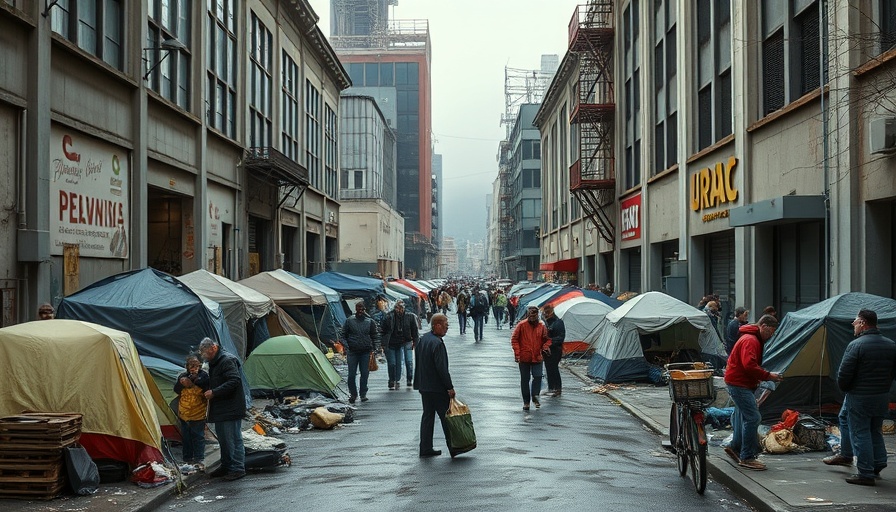
San Francisco's Homeless Tent Count Drops to Historic Low
In a notable shift, the latest data reveals that the number of homeless tents in San Francisco has reached its lowest point since the COVID-19 pandemic. As of June 2025, the city reported just 165 tents and tent-like structures—a significant decrease of nearly 25% from March 2025, when the count stood at 220. This decline represents an impressive drop of approximately 85% from the peak of 1,108 tents recorded in April 2020.
Understanding the Decrease: Is the City Improving Conditions?
Mayor Daniel Lurie attributes this drop to the coordinated efforts of city teams focused on homelessness and behavioral health crises, which were enhanced in March with the launch of neighborhood-based street response teams. However, the implications of this decrease raise critical questions about the actual conditions faced by homeless residents in the city.
Jennifer Friedenbach, Executive Director of the Coalition on Homelessness, cautions against viewing the reduced tent count as a true measure of homelessness alleviation. She argues that many individuals may still be homeless, simply without tents as shelter. The sweeps of homeless encampments that began in August 2024 under the London Breed administration have shifted the visibility of homelessness, often pushing individuals into less visible, less secure living conditions.
Neighborhood Insights: Tent Distribution Across the City
The tents remain unequally distributed among various neighborhoods. Apparel City, near Bernal Heights and Bayview, has the highest number of tents, followed by South of Market and the Tenderloin. Bayview is notable for still harboring locations with more than six tents—highlighting that, while encampments have decreased citywide, certain areas continue to see concentrations of homelessness.
Increasing Shelter Capacity: A Doubling-edged Sword
While the number of tents is declining, the need for shelter is on the rise, with the number of individuals in city shelters increasing from 6,859 in 2021 to 9,913 in 2024. This trend correlates with efforts to expand shelter capacity, but it also suggests a growing homelessness crisis that remains unaddressed.
According to city data, only 122 of the 1,500 new shelter beds promised by the mayor have been established, leaving many still without access to adequate housing. The question remains: where are those not accommodated in shelters finding refuge?
Voices from the Community: Perspectives on Homelessness
Community members have expressed concern that the city's efforts have merely rendered the problem less visible. Rob Young, a representative from the 16th Street Alliance, emphasized that the removal of tents has led to a more pronounced visibility of issues, as those without shelter are now more exposed to the elements and public scrutiny.
The Complex Reality of Homelessness in San Francisco
The interplay between visible homeless encampments and the invisible struggles of those on the streets presents a complicated narrative. As the number of tents decreases, individuals experiencing homelessness still face the same challenges: addiction, mental health issues, and lack of access to stable housing.
Looking Forward: The Future of Homeless Services in San Francisco
As the city grapples with these complexities, the questions surrounding effective solutions for homelessness are more critical than ever. The public must demand transparent data and effective measures that address the root causes of homelessness rather than simply focusing on its visible symptoms.
Anger and frustration about the city’s policies remain, with residents calling for more comprehensive approaches that involve community input and improved services for the homeless population. The narratives of the past may inform future efforts: positive change requires not just management of appearance, but a commitment to tangible support and care for those who remain vulnerable.
Call to Action: Get Involved
As residents of San Francisco and neighboring areas, consider participating in local initiatives aimed at tackling homelessness. Engage with community organizations that advocate for better policies and work directly with the homeless community. Together, we can push for changes that create lasting impacts for those in need.
 Add Row
Add Row  Add
Add 




 Add Row
Add Row  Add
Add 

Write A Comment